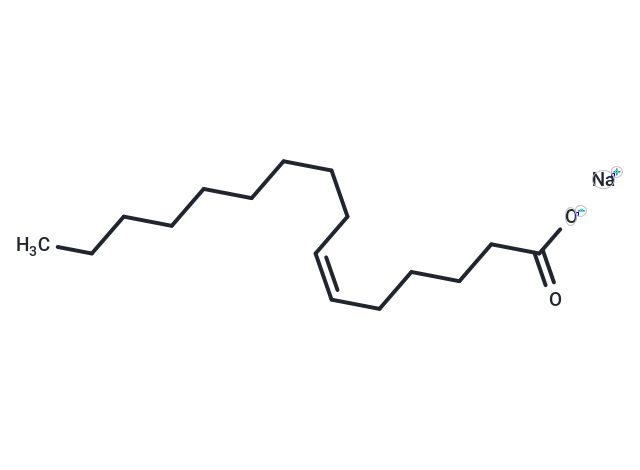Shopping Cart
- Remove All
 Your shopping cart is currently empty
Your shopping cart is currently empty

Sapienic acid sodium is a fatty acid with variable antimicrobial activities against Gram-positive and Gram-negative bacteria found on the skin and in the oral cavity.

| Pack Size | Price | Availability | Quantity |
|---|---|---|---|
| 1 mg | $38 | In Stock | |
| 2 mg | $54 | In Stock | |
| 5 mg | $89 | In Stock | |
| 10 mg | $122 | In Stock | |
| 25 mg | $247 | In Stock | |
| 50 mg | $396 | In Stock | |
| 100 mg | $592 | In Stock | |
| 500 mg | $1,280 | In Stock |
| Description | Sapienic acid sodium is a fatty acid with variable antimicrobial activities against Gram-positive and Gram-negative bacteria found on the skin and in the oral cavity. |
| Targets&IC50 | Fusobacterium nucleatum:, Streptococcus mitis:93.8 μg/mL , MBC: 31.3 μg/mL , Streptococcus sanguinis: 375.0 μg/mL |
| In vitro | Sapienic acid is active against Streptococcus sanguinis, Streptococcus mitis, and Fusobacterium nucleatum. Kinetic assays show that killing of S. sanguinis and S. mitis with sapienic acid is gradual and occurred within 24 h[1]. |
| Molecular Weight | 276.4 |
| Formula | C16H29NaO2 |
| Cas No. | 217477-25-3 |
| Smiles | CCCCCCCCC/C=C\CCCCC([O-])=O.[Na+] |
| Relative Density. | no data available |
| Storage | Powder: -20°C for 3 years | In solvent: -80°C for 1 year | Shipping with blue ice. | |||||||||||||||||||||||||
| Solubility Information | Ethanol: 0.7 mg/mL (2.57 mM), Sonication is recommended. DMSO: 3.85 mg/mL (13.86 mM), Sonication is recommended. | |||||||||||||||||||||||||
Solution Preparation Table | ||||||||||||||||||||||||||
Ethanol/DMSO
DMSO
| ||||||||||||||||||||||||||

Copyright © 2015-2025 TargetMol Chemicals Inc. All Rights Reserved.